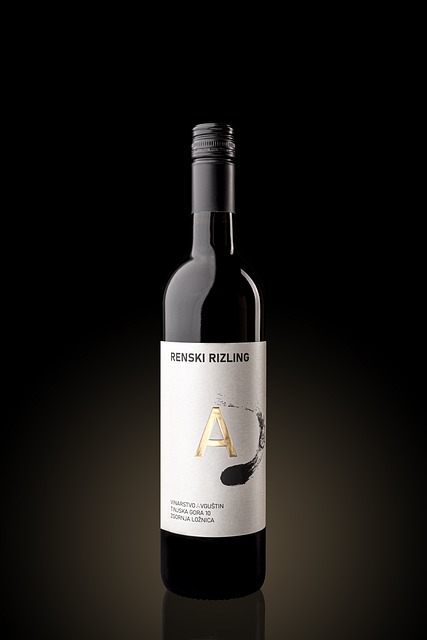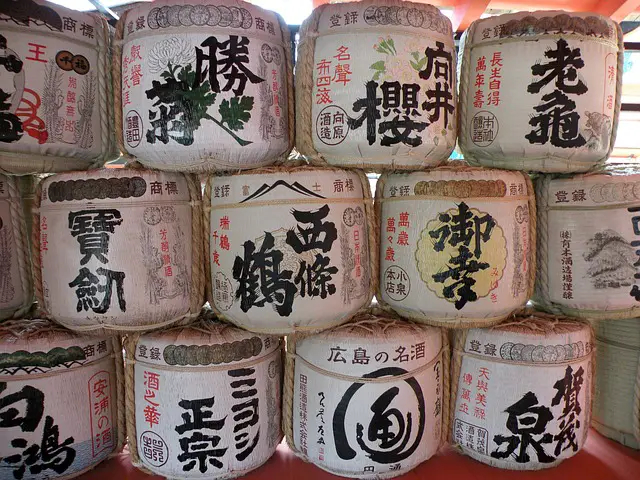Whether you’re a wine connoisseur or just a casual enthusiast, the question of whether Pinot Gris is sweet or dry has likely crossed your mind. With its diverse flavor profile and the whole spectrum of taste possibilities, understanding the balance of this popular white wine can be a bit challenging. But fear not! In this article, we will delve deep into the fascinating world of Pinot Gris, unveiling the secrets behind its sweetness and dryness. By the end, you’ll have a crystal-clear understanding of how this wine walks the tightrope, striking a perfect equilibrium in its flavor. So, sit back, pour yourself a glass, and let’s discover the delicate art of balancing Pinot Gris.
Obsah
- Pinot Gris: Unveiling its Flavor Profile
- Understanding the Difference: Sweet vs. Dry Pinot Gris
- Exploring the Factors that Affect Pinot Gris’ Flavor
- Achieving Balance: How to Identify Sweetness and Dryness in Pinot Gris
- Finding the Perfect Pinot Gris for Your Palate
- Harmony on the Tastebuds: Pairing Pinot Gris with Food
- Demystifying the Myth: Debunking Misconceptions about Pinot Gris
- Mastering the Art of Serving: Temperature, Glassware, and Decanting for Pinot Gris
- Temperature
- Glassware
- In Retrospect
Pinot Gris: Unveiling its Flavor Profile
The flavor profile of Pinot Gris is a delightful combination of fruity, floral, and earthy notes that make it a truly distinct and versatile wine. Known for its vibrant acidity, Pinot Gris exhibits a range of flavors that can vary depending on the region it is grown in, as well as the winemaking techniques employed.
Commonly, Pinot Gris showcases fruit flavors such as pear, apple, and lemon, with hints of tropical fruits like pineapple and mango adding a touch of exoticism. The aromatics of Pinot Gris can often be characterized by delicate floral notes, such as jasmine or honeysuckle, which elevate the overall aroma and add a refreshing element. Additionally, Pinot Gris can exhibit subtle earthy undertones, with hints of wet stone or mushroom, further enhancing its complexity and intrigue.
- Flavor profile: fruity, floral, and earthy
- Key flavors: pear, apple, lemon, pineapple, mango
- Aromatics: jasmine, honeysuckle
- Undertones: wet stone, mushroom
When it comes to food pairing, Pinot Gris truly shines. Its bright acidity and refreshing flavors make it an ideal match for an array of dishes. From light salads and seafood to creamy pastas and roasted poultry, Pinot Gris complements a wide range of flavors and textures, enhancing the dining experience. Additionally, its versatility extends to cheese pairing, as it pairs exceptionally well with soft cheeses like Brie or fresh goat cheese.
With its unique flavor profile and food-friendly nature, Pinot Gris is undoubtedly a wine worth exploring. Whether enjoyed on its own or paired with your favorite meals, this elegant varietal is sure to leave a lasting impression on your palate.
Understanding the Difference: Sweet vs. Dry Pinot Gris
When it comes to Pinot Gris, there’s a distinct contrast between sweet and dry variations, offering wine enthusiasts a delightful range of flavors to explore. Let’s dive into the complexities and characteristics that differentiate these two popular styles:
Sweet Pinot Gris:
- Sugar Content: Sweet Pinot Gris wines have a higher residual sugar level, resulting in a noticeably sweeter taste.
- Aromas and Flavors: Expect luscious notes of ripe tropical fruits like pineapple, peach, and apricot, coupled with honey undertones.
- Food Pairings: These sweeter Pinot Gris wines complement spicy dishes, creamy desserts, and flavorful cheeses.
- Enjoyment: They provide a delightful, rich mouthfeel and an excellent option for those who prefer a touch of sweetness in their wines.
Dry Pinot Gris:
- Sugar Content: Dry Pinot Gris wines have minimal residual sugar, resulting in a more crisp and refreshing taste.
- Aromas and Flavors: Expect vibrant citrus notes like lemon, lime, and grapefruit, often accompanied by hints of green apple or pear.
- Food Pairings: These dry Pinot Gris wines pair wonderfully with light seafood dishes, fresh salads, and tangy goat cheese.
- Enjoyment: Their clean and zesty character makes them an ideal choice for those who prefer a drier, more acidic wine.
Exploring the Factors that Affect Pinot Gris’ Flavor
Pinot Gris, a white wine known for its crisp and refreshing taste, showcases a range of unique flavors that can vary based on several key factors. Understanding these factors offers wine enthusiasts a deeper appreciation for the complexities and nuances of this popular varietal. Here, we delve into the primary elements that influence the flavor profile of Pinot Gris:
- Climate: The climate in which Pinot Gris grapes are grown plays a significant role in shaping their flavor. Cooler regions tend to produce wines with higher acidity and flavors of citrus, green apple, and pear, while warmer regions offer riper fruit flavors like tropical notes, ripe peach, and melon.
- Soil: The type of soil in the vineyard greatly impacts the flavors obtained from Pinot Gris grapes. Mineral-rich soils, such as limestone or volcanic soils, often contribute to a wine’s minerality and can add subtle nuances of wet stone or flint. On the other hand, clay soils tend to produce wines with a fuller body and richer mouthfeel.
- Winemaking Techniques: The winemaker’s choices during the fermentation and aging process also influence the flavor of the final wine. Factors like the use of oak barrels or stainless steel tanks, as well as the decision to employ malolactic fermentation, can impart flavors such as vanilla, toast, and butter. These techniques allow winemakers to craft Pinot Gris wines with varying levels of richness, complexity, and texture.
By carefully considering these factors, wine enthusiasts can gain a deeper understanding of why Pinot Gris can exhibit such an extensive array of flavors. From the climate and soil in which the grapes are cultivated to the winemaking techniques employed, each aspect contributes to the overall taste profile, making each bottle of Pinot Gris a unique sensory experience.
Achieving Balance: How to Identify Sweetness and Dryness in Pinot Gris
Pinot Gris, a versatile white wine varietal, is renowned for its delicate flavors and ability to strike a perfect balance between sweetness and dryness. Learning to identify these characteristics can greatly enhance your appreciation of this remarkable wine. Whether you’re a wine enthusiast or simply intrigued by the world of flavors, this guide will help you become a connoisseur of Pinot Gris.
When it comes to identifying sweetness in Pinot Gris, pay close attention to the following cues:
- Color: While Pinot Gris ranges from pale straw to golden yellow, a slightly darker hue can suggest residual sugar and a touch of sweetness.
- Nose: Take a moment to swirl your glass and inhale the captivating aromas. If you detect floral notes or hints of ripe fruits like pear, apple, or peach, it often indicates that the wine leans towards the sweeter side.
- Taste: The most crucial step lies in savoring the wine’s flavors on your palate. If you experience a lush, honeyed mouthfeel accompanied by a slightly sweet taste or a slight residual sugar sensation, the Pinot Gris might have a touch of sweetness.
Conversely, if dryness is what you seek in a Pinot Gris, focus on the following elements:
- Color: A lighter shade of Pinot Gris often implies a drier wine, as it suggests fewer sugars are present in the grapes.
- Nose: Look for subtle aromas like citrus, green apple, or even mineral notes. These scents indicate a drier wine profile, making it an excellent choice for those who prefer crisp and refreshing flavors.
- Taste: The true test lies in the taste. If you observe a racier acidity, a lack of sweetness, and a clean, crisp finish, then you’ve stumbled upon a dry Pinot Gris.
By familiarizing yourself with these indicators of sweetness and dryness in Pinot Gris, you’ll be equipped to select the perfect bottle for any occasion, whether it’s to accompany a light summer salad or to savor on its own. Remember, the key is to indulge your taste buds and find the delicate balance that resonates with you.
Finding the Perfect Pinot Gris for Your Palate
Pinot Gris, also known as Pinot Grigio in Italy, is a delightful white wine that tantalizes the taste buds with its crisp acidity and vibrant flavors. If you are on a quest to find the perfect Pinot Gris that suits your palate, we’ve got you covered. Here are some key tips to help you navigate through the vast array of options and discover the one that will leave you craving for more:
- Consider the Origins: Pinot Gris grapes thrive in various regions around the world, each offering its unique characteristics. Explore wines from Alsace, France, if you prefer a richer and fuller-bodied style. Alternatively, opt for Italian Pinot Grigio for a lighter, citrusy taste. Don’t hesitate to explore wines from other regions such as Oregon, New Zealand, or Australia for their own interpretation of this captivating varietal.
- Pay Attention to Taste Notes: Pinot Gris has a diverse flavor profile, ranging from tropical fruits like pineapple and mango to apple, pear, and even hints of honey. Pay attention to the tasting notes provided on labels or by sommeliers to identify the flavors that resonate with your palate. Whether you prefer a fruity, floral, or mineral-driven Pinot Gris, there is a bottle out there that will perfectly fit your preferences.
Harmony on the Tastebuds: Pairing Pinot Gris with Food
When it comes to finding the perfect wine to complement your meal, look no further than Pinot Gris. This versatile white wine offers a harmonious blend of flavors that can elevate your dining experience to new heights. Whether you’re new to the world of wine pairing or a seasoned enthusiast, here are some tips and suggestions to create a symphony of tastes on your tastebuds.
1. Seafood Sensations: The crisp acidity and citrus notes of Pinot Gris make it an excellent companion to seafood dishes. The delicate flavors of crab cakes, grilled shrimp, or seared scallops are beautifully enhanced by the wine’s subtle hints of lemon and green apple.
2. Vegetarian Delights: Pinot Gris is a vegetarian’s best friend. Its refreshing and vibrant character complements vegetable-based dishes like roasted asparagus, herb-infused salads, or creamy mushroom risotto. The wine’s moderate body and balanced acidity seamlessly merge with the earthy and herbal flavors, resulting in a delightful experience.
Demystifying the Myth: Debunking Misconceptions about Pinot Gris
Pinot Gris, a fascinating grape variety that often has a cloud of confusion surrounding it. Let’s set the record straight by debunking some common misconceptions about this enchanting white wine.
Misconception 1: Pinot Gris is the same as Pinot Grigio.
While both wines are made from the same grape, Pinot Gris and Pinot Grigio showcase distinct characteristics resulting from different winemaking techniques and terroirs. Pinot Gris, popularized in Alsace, France, tends to be richer, fuller-bodied, and lusciously textured, with notable notes of stone fruit and honey. Pinot Grigio, commonly found in Italy, is known for its lighter, crisper style, highlighting vibrant acidity, and flavors of citrus and green apple. So, remember, they might be siblings, but they’re not twins!
Misconception 2: Pinot Gris is only meant to be consumed young.
Contrary to popular belief, Pinot Gris can evolve beautifully with age, resulting in a more complex and nuanced wine. While it’s true that some Pinot Gris wines are crafted to be enjoyed in their youthful vibrancy, many producers are now embracing extended oak aging and lees contact to enhance the wine’s structure and depth. Don’t hesitate to cellar a high-quality Pinot Gris, as it can surprise you with delightful flavors of toasted almonds, spices, and dried fruits over time.
Mastering the Art of Serving: Temperature, Glassware, and Decanting for Pinot Gris
Temperature
When it comes to serving Pinot Gris, getting the temperature just right is crucial in order to fully appreciate its delicate flavors. Unlike other white wines, Pinot Gris benefits from being served slightly warmer. Aim to serve it between 50-55°F (10-13°C) to allow its vibrant aromas to shine through. This slightly warmer temperature helps release the wine’s characteristic floral and fruit notes, creating a more enjoyable drinking experience.
To achieve the perfect temperature, it’s recommended to refrigerate your bottle of Pinot Gris for about 2-3 hours prior to serving. If you’ve accidentally chilled it too much, don’t worry! Simply let the bottle sit at room temperature for 10-15 minutes to allow it to warm up slightly. Remember, serving Pinot Gris at the right temperature brings out its complexity and ensures you savor every sip.
Glassware
Choosing the right glassware is another essential element in the art of serving Pinot Gris. Opt for a glass with a wider bowl and a slightly tapered top, such as a tulip-shaped glass. This particular shape allows the wine’s aromas to concentrate, enhancing your olfactory experience. The wider bowl also allows for better oxygenation, showcasing the wine’s full range of flavors.
When pouring, fill the glass about one-third full, allowing ample room for swirling and encouraging the release of aromatic compounds. Remember to hold the glass by the stem to avoid transferring heat from your hand to the wine, ensuring it stays at the optimal temperature. By selecting the right glassware, you can enhance the sensory pleasure of enjoying a fine Pinot Gris and fully appreciate its nuanced character.
In Retrospect
In conclusion, Pinot Gris can range from sweet to dry based on the winemaking style. Balancing the flavor profile is crucial in achieving an ideal taste that appeases both those seeking sweetness and those preferring a drier experience.









